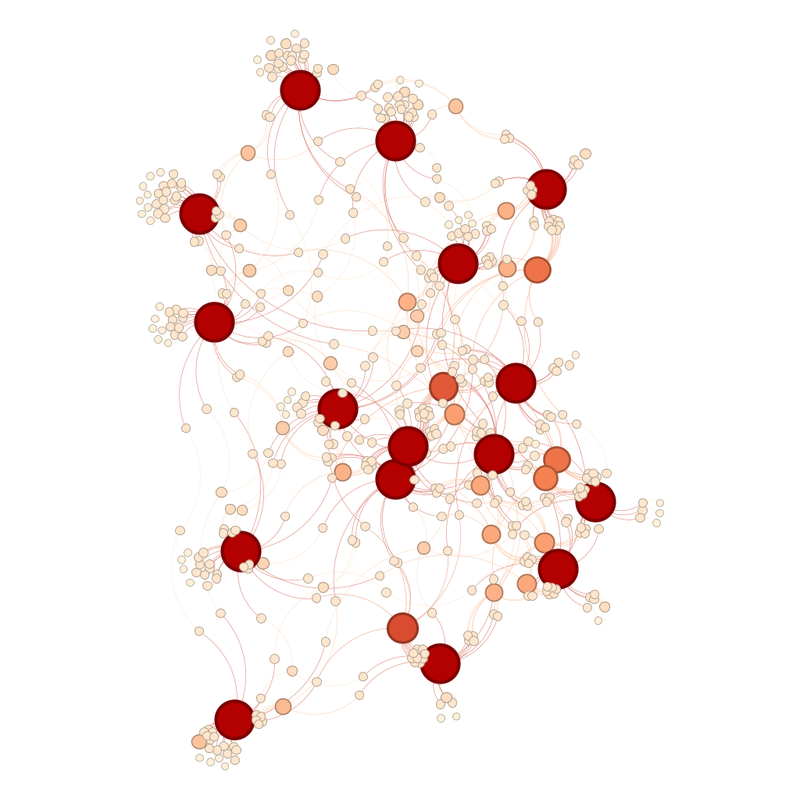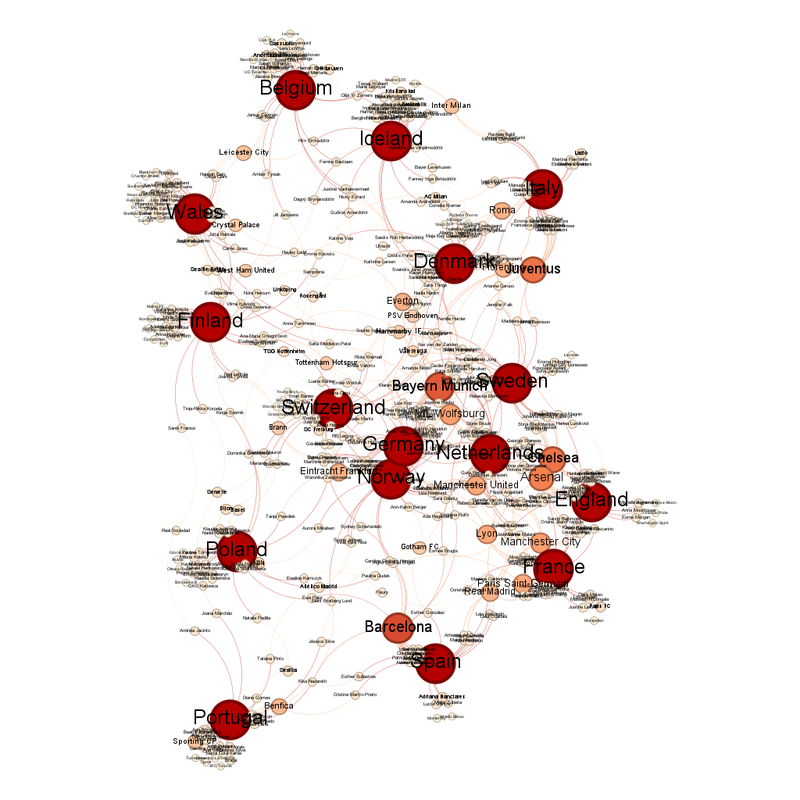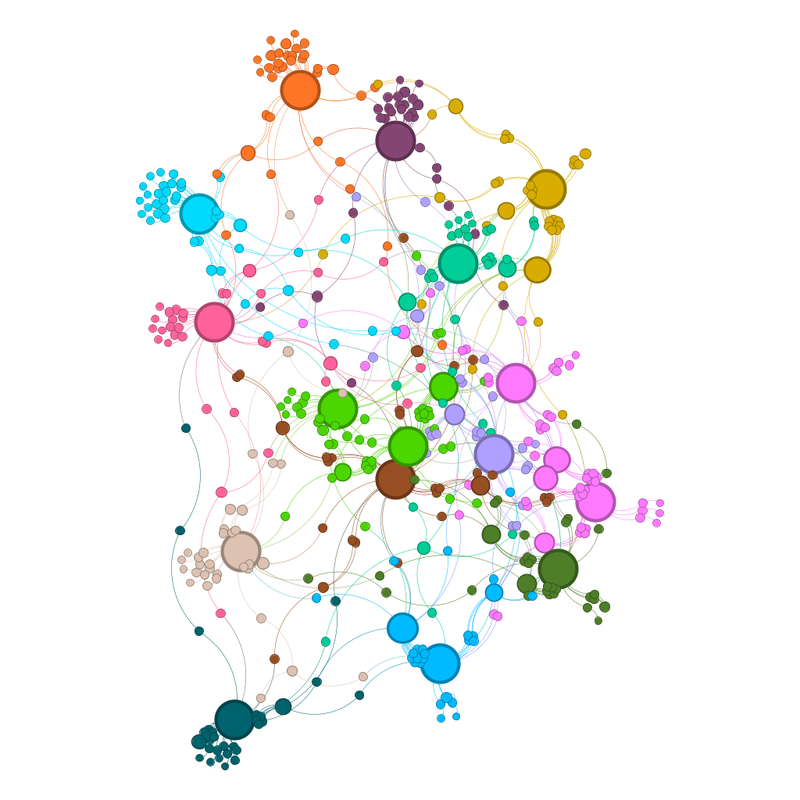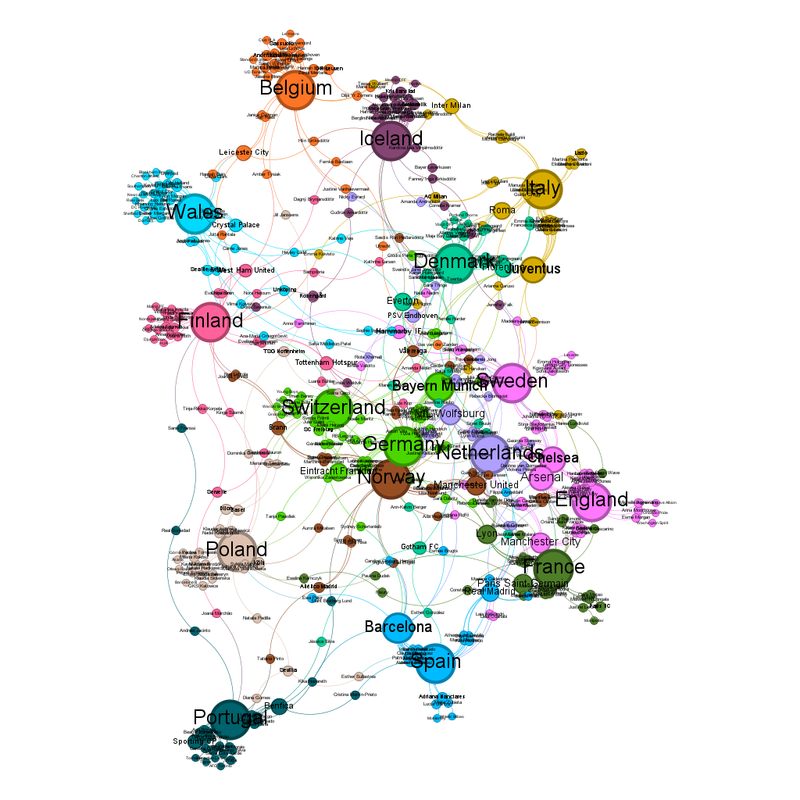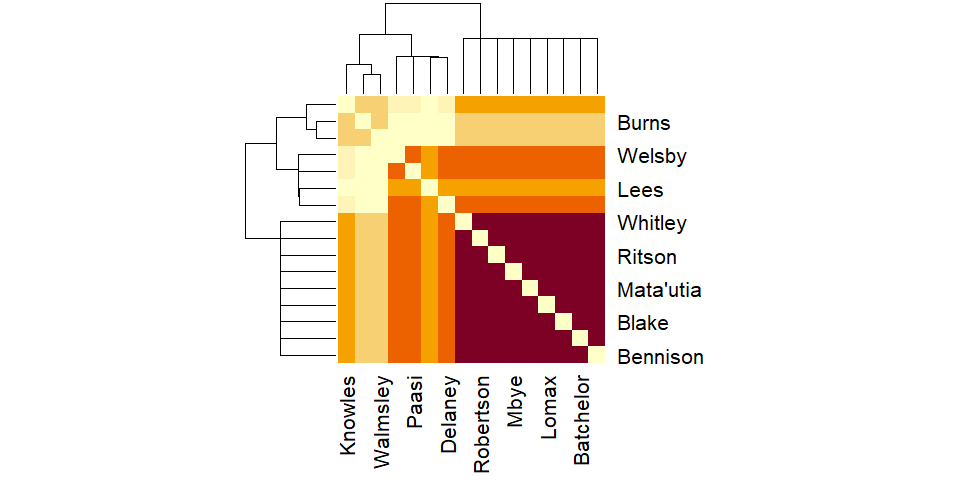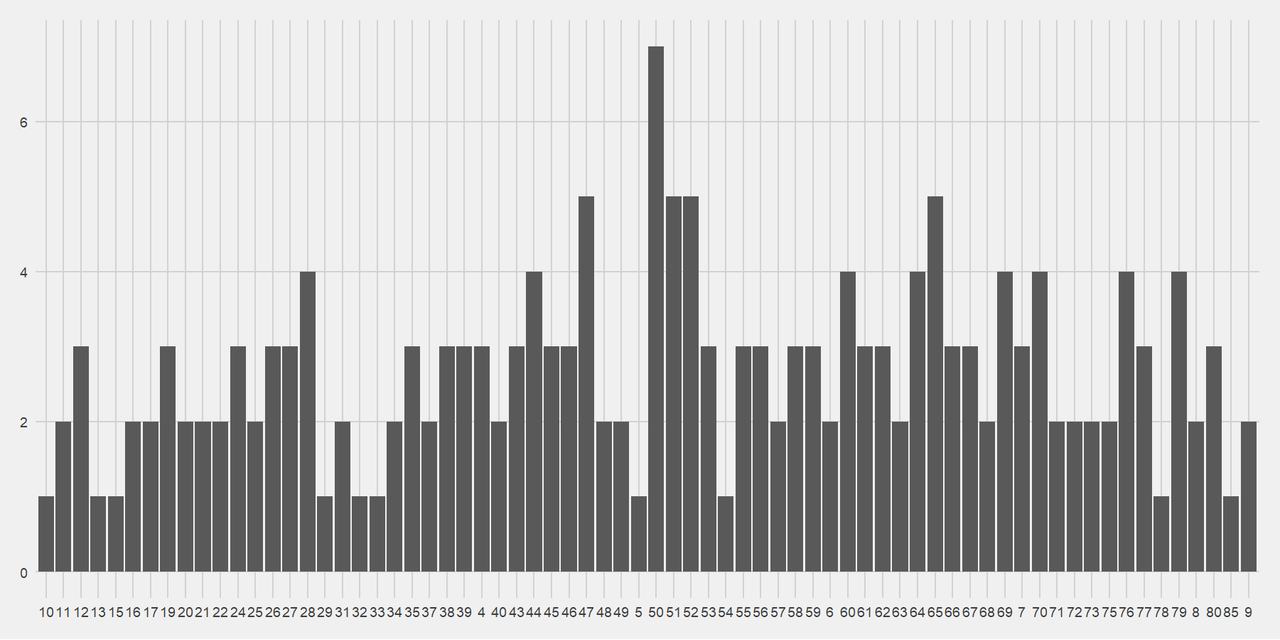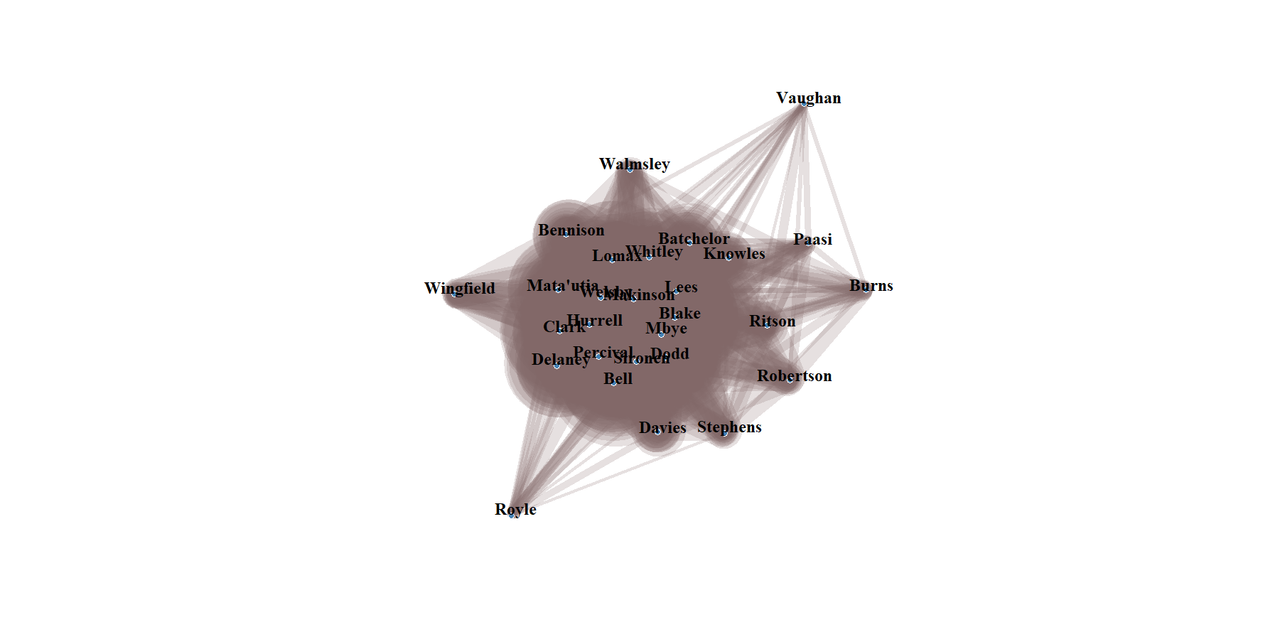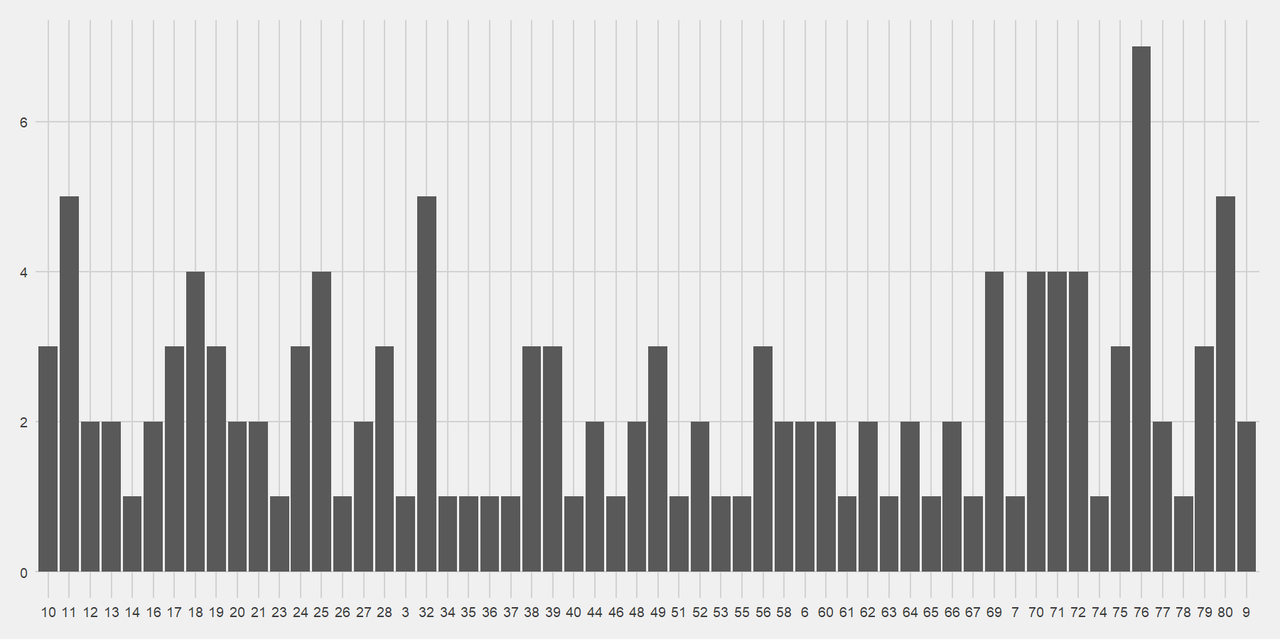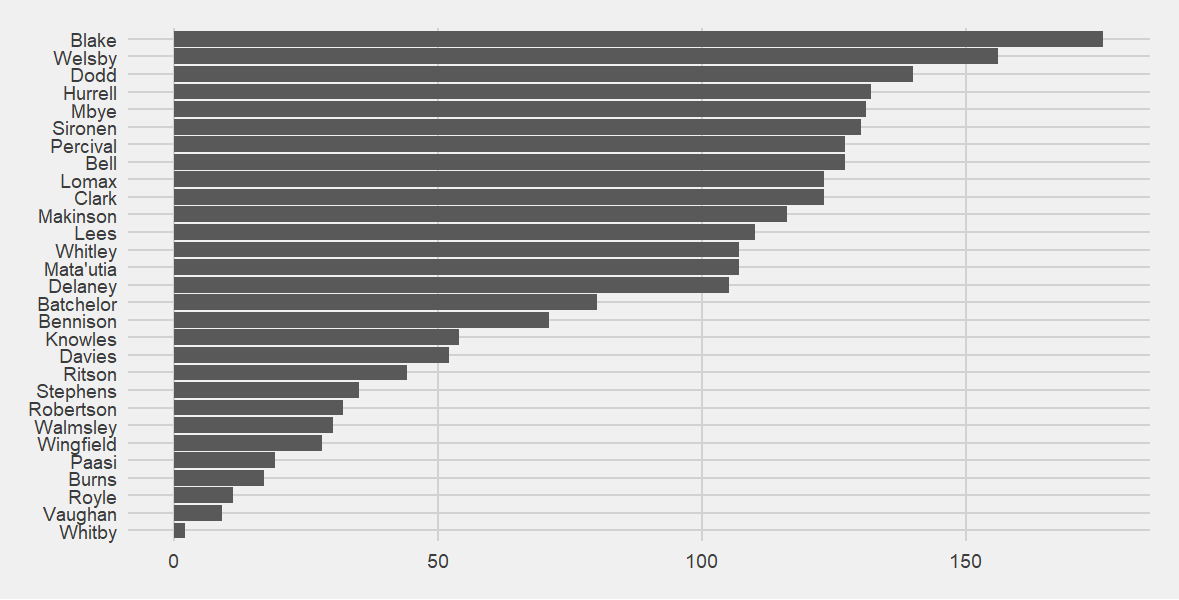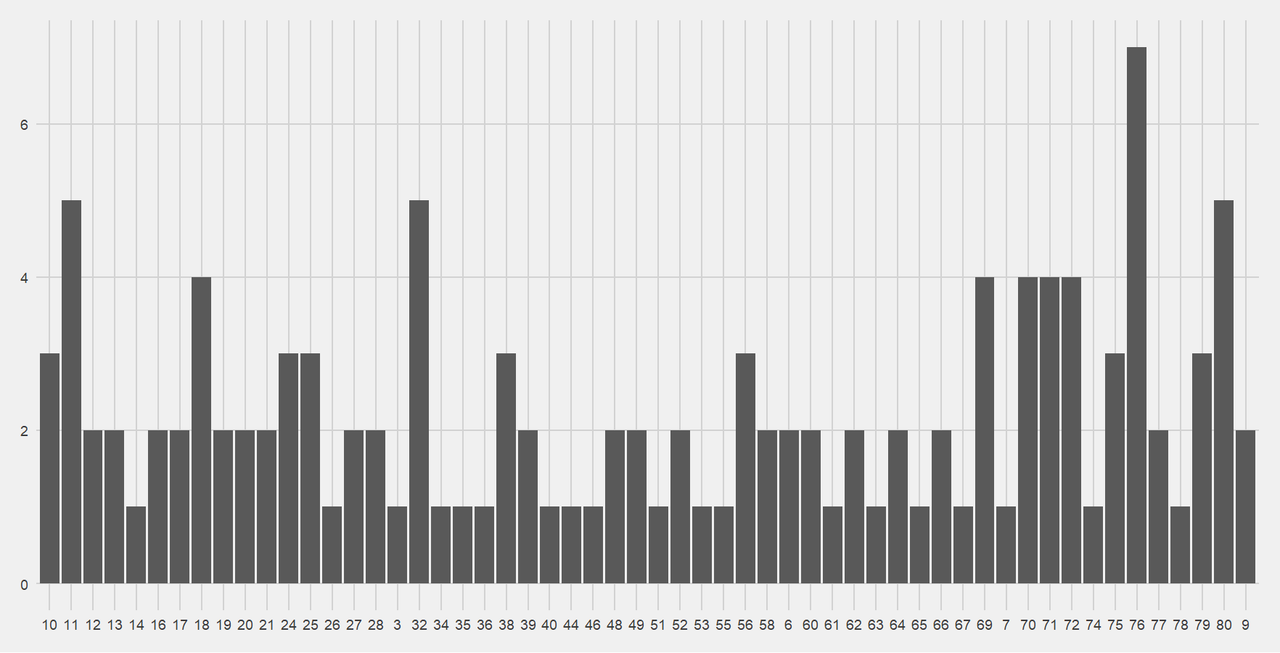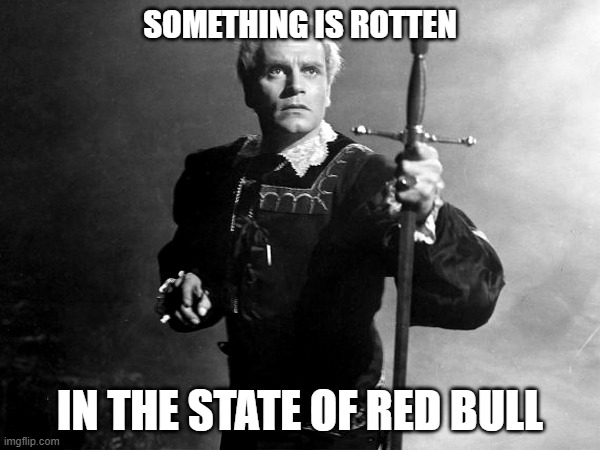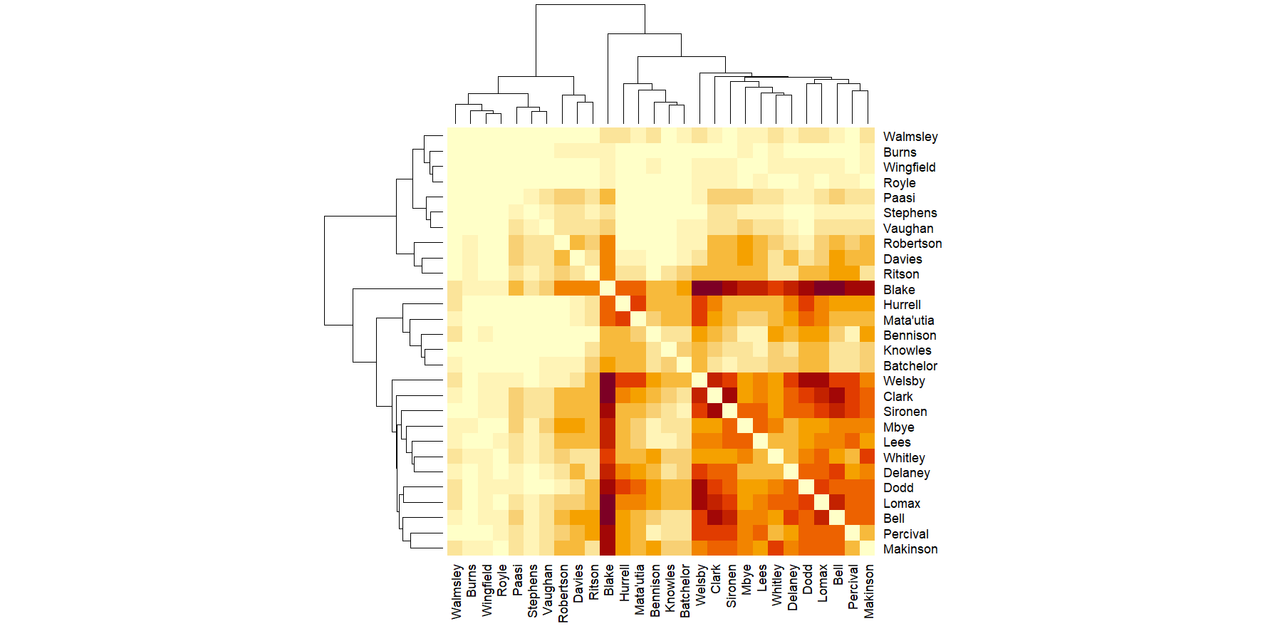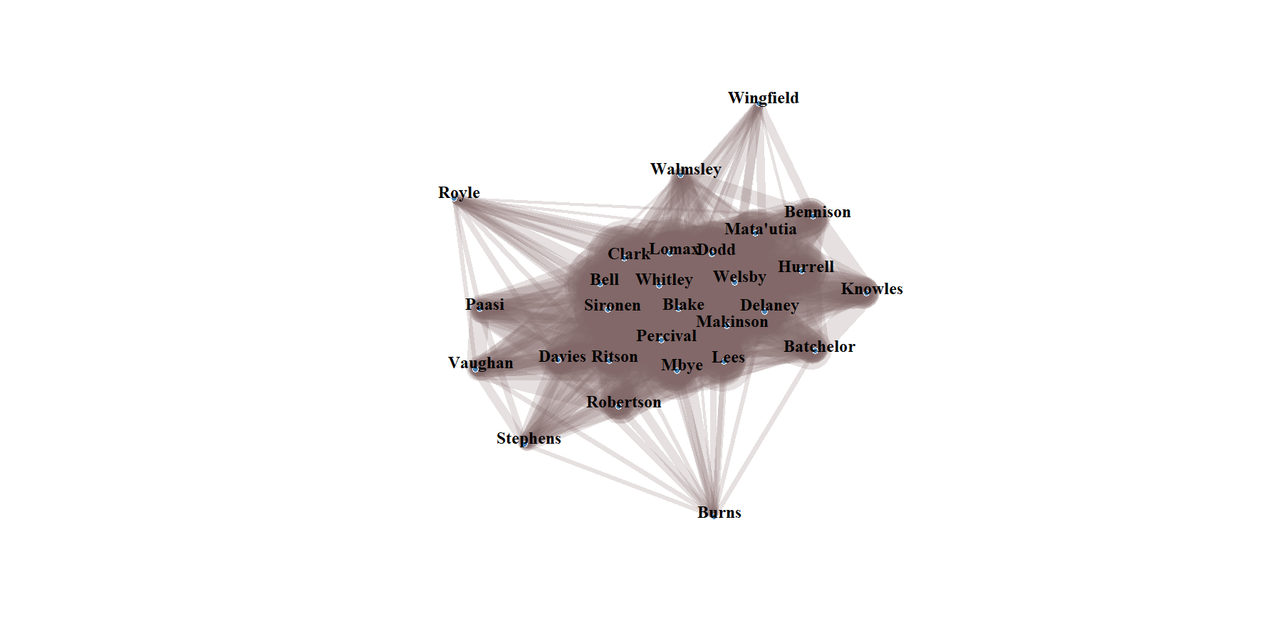This Sporting Blog
Sunday, 29 June 2025
Euro 2025 Network Diagrams
Tuesday, 24 June 2025
Saints Ahoy - Game 27 and the 2024 Season to Date
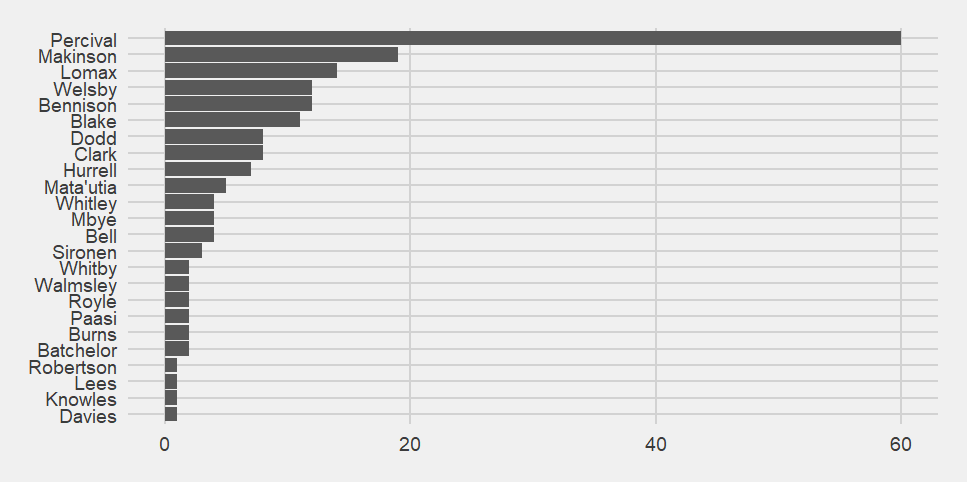
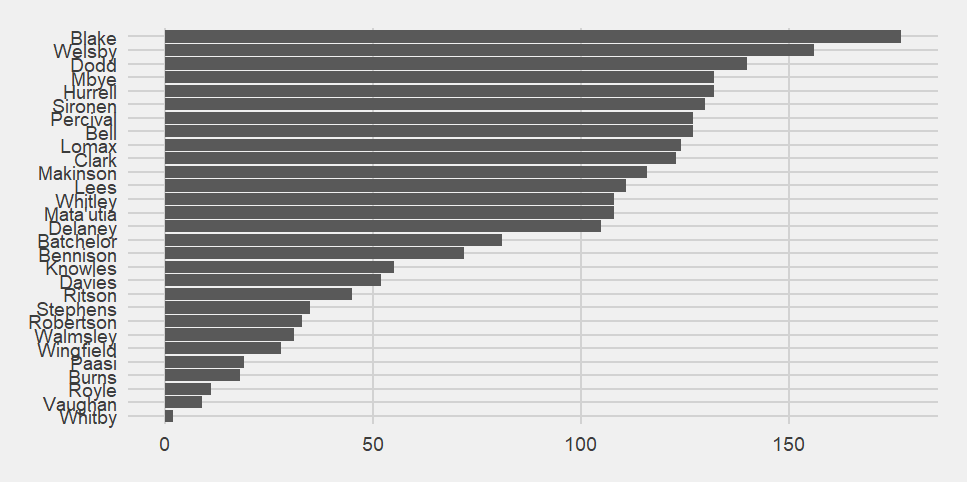
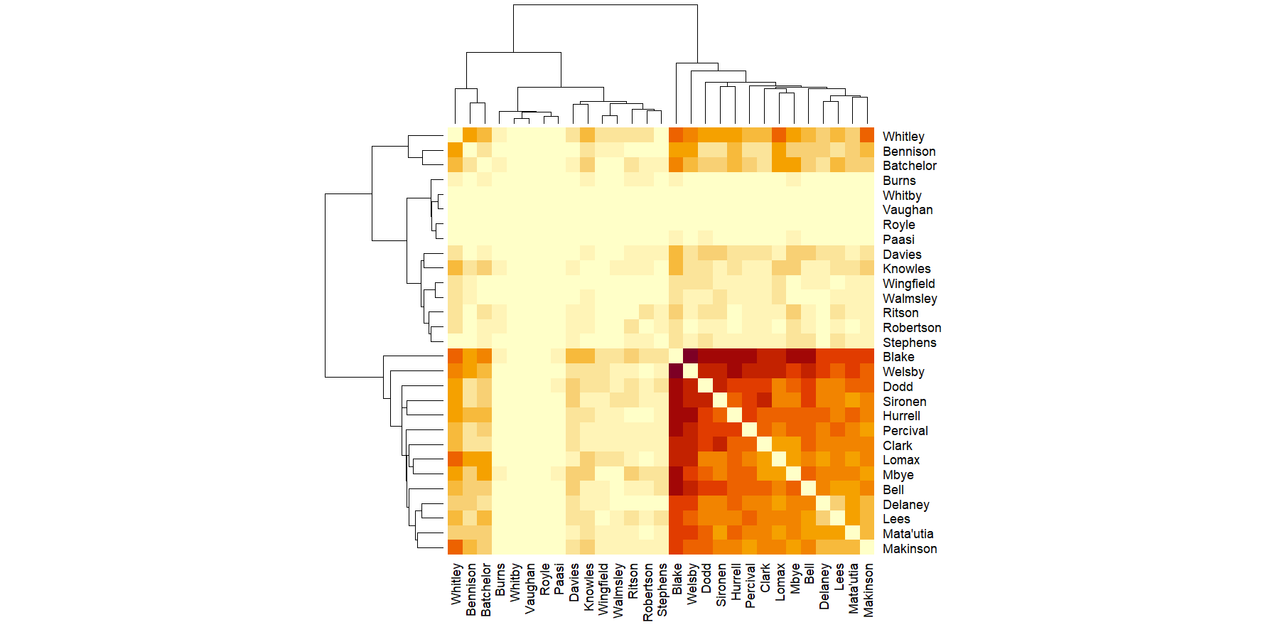
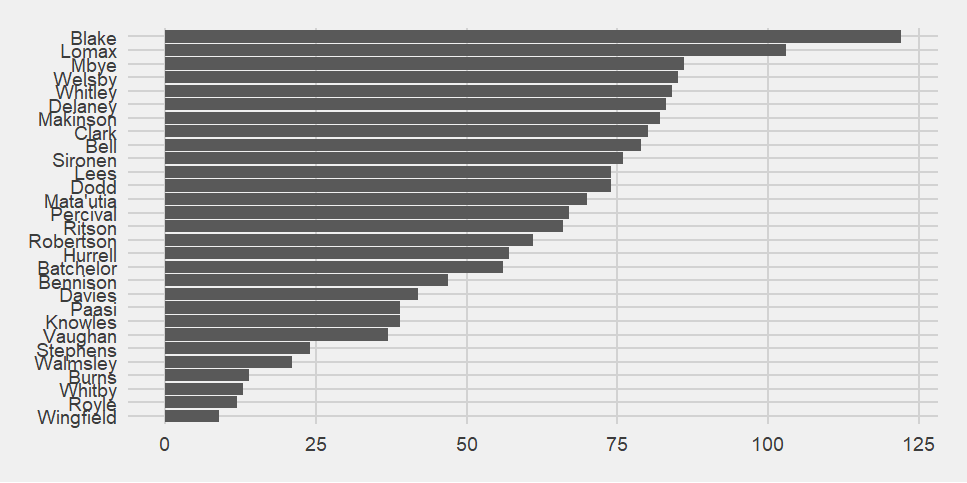
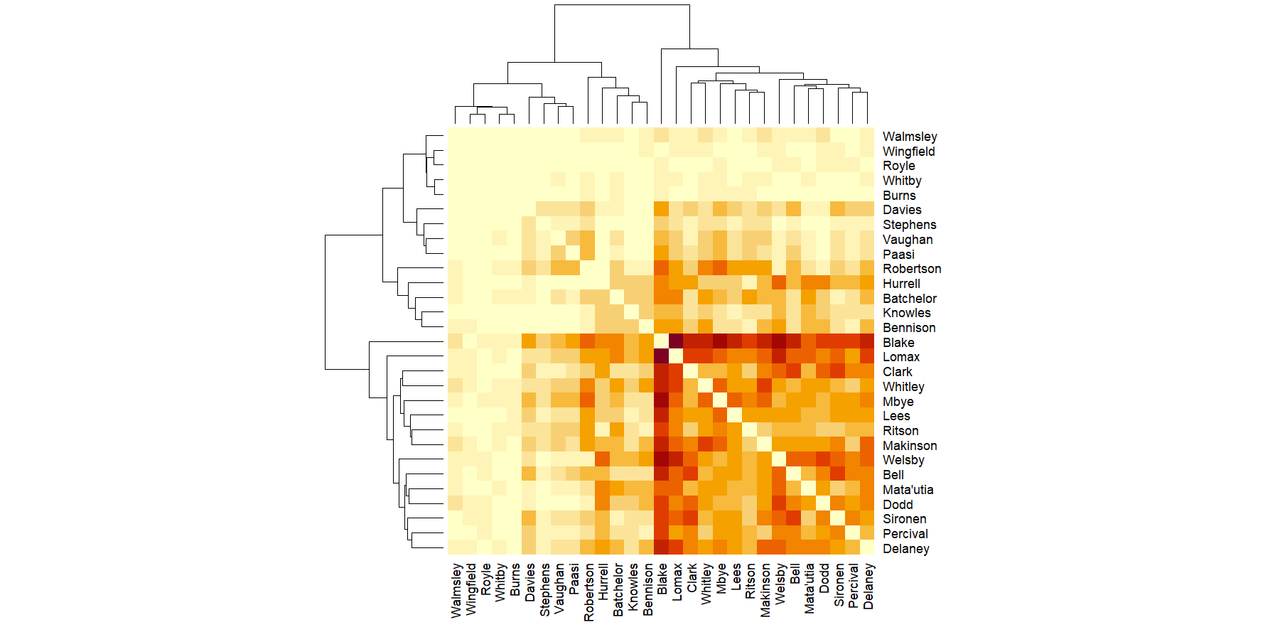 Another interesting this is that, although the shape is similar, some of the players have moved section e.g. Ritson has moved from the middle group to the darkest group, in just one game.
The network graph is the same shape but has shifted about 15 degrees clockwise. Last time I suggested that players were either being sucked into the centre or moving out. It was being sucked in because they're all much closer now.
Another interesting this is that, although the shape is similar, some of the players have moved section e.g. Ritson has moved from the middle group to the darkest group, in just one game.
The network graph is the same shape but has shifted about 15 degrees clockwise. Last time I suggested that players were either being sucked into the centre or moving out. It was being sucked in because they're all much closer now.

Wednesday, 18 June 2025
Saints Ahoy - Game 26 and the Season to Date
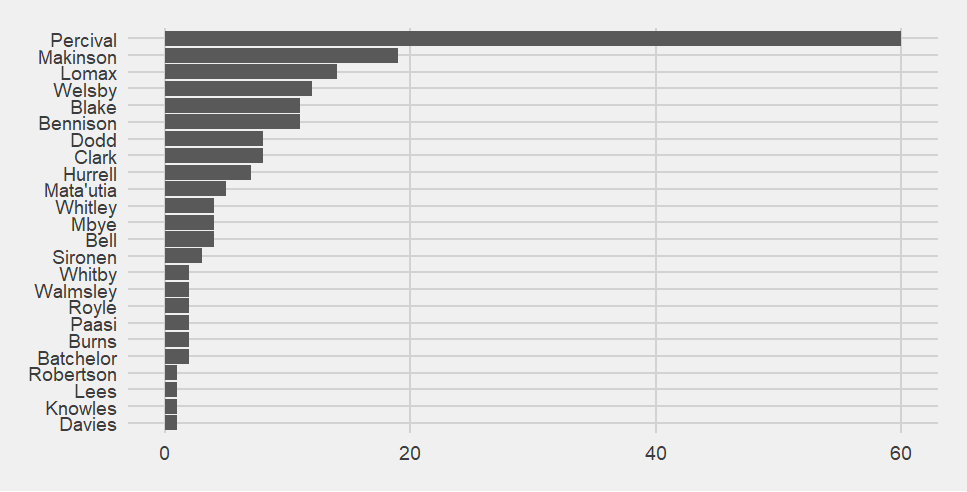
 Normally it would go darkest (most often together) in the bottom right hand corner and paler (less often together) as it moves up and to the left.
This time, that pattern happens but then there's a suddenly dark border along the top and left which consists of Whitley, Bennison and Batchelor, suggesting Saints score when they are on the pitch together. The grouping makes some sort of sense because Batchelor definitely missed some matches with an injury.
Normally it would go darkest (most often together) in the bottom right hand corner and paler (less often together) as it moves up and to the left.
This time, that pattern happens but then there's a suddenly dark border along the top and left which consists of Whitley, Bennison and Batchelor, suggesting Saints score when they are on the pitch together. The grouping makes some sort of sense because Batchelor definitely missed some matches with an injury. 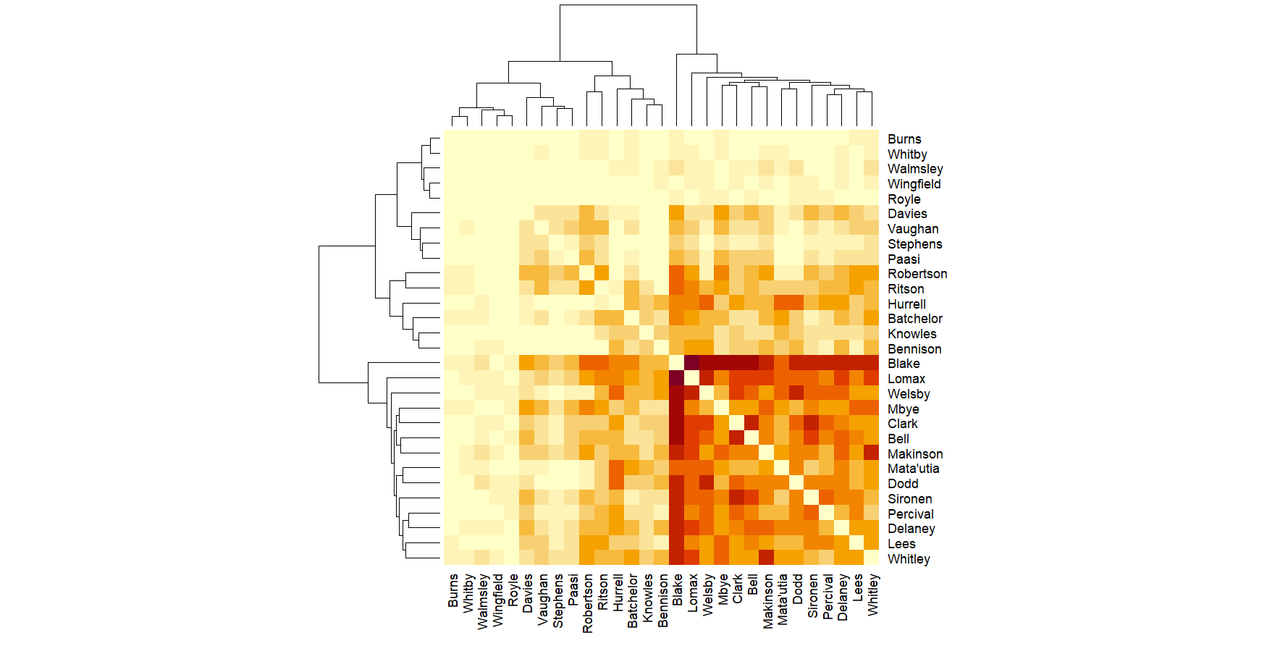

Monday, 16 June 2025
Formula 1 2025 - Canadian Grand Prix
In keeping with my previous rant about the cars being too wide for the tracks (https://fulltimesportsfan.wordpress.com/2025/04/16/formula-1-2025-japanese-grand-prix/), I present the 2025 Canadian Grand Prix as evidence. A Canadian Grand Prix where the most interesting thing is the tyre strategy is no kind of Canadian Grand Prix at all.
But, because of the unexpectedly high tyre wear, it was interesting. Well done to Ocon and Sainz jnr for making a single stop work out.I am still trying to understand Ferrari's strategy. On the other hand, I think that puts me in good company, which includes one of their drivers. I try not to rag on the strategy team, because this is a huge step up from the indecisive years, but ... exactly how was that strategy supposed to work. Was the intention long, long, short? Leclerc wasn't in a position to do anything useful with that strategy given where he qualified.
In other people whose race was compromised by qualifying - McLaren. I think that crash was McLaren's fault as much as it was Norris's. You have two drivers going for the world title and you let them race. Now, thankfully due to the other teams having cars that are not as good, there's no real damage done, except to Norris's title bid and probably his spirit. For what?
This is why I will never object to teams using team orders.
After the race, it was fascinating how differently Toto talked to his two drivers. Although, could Bono sound more like a proud Papa - so adorable. Antonelli on the radio afterwards - also adorable!!
Wednesday, 11 June 2025
Saints Ahoy - Game 25 and the 2024 season to date



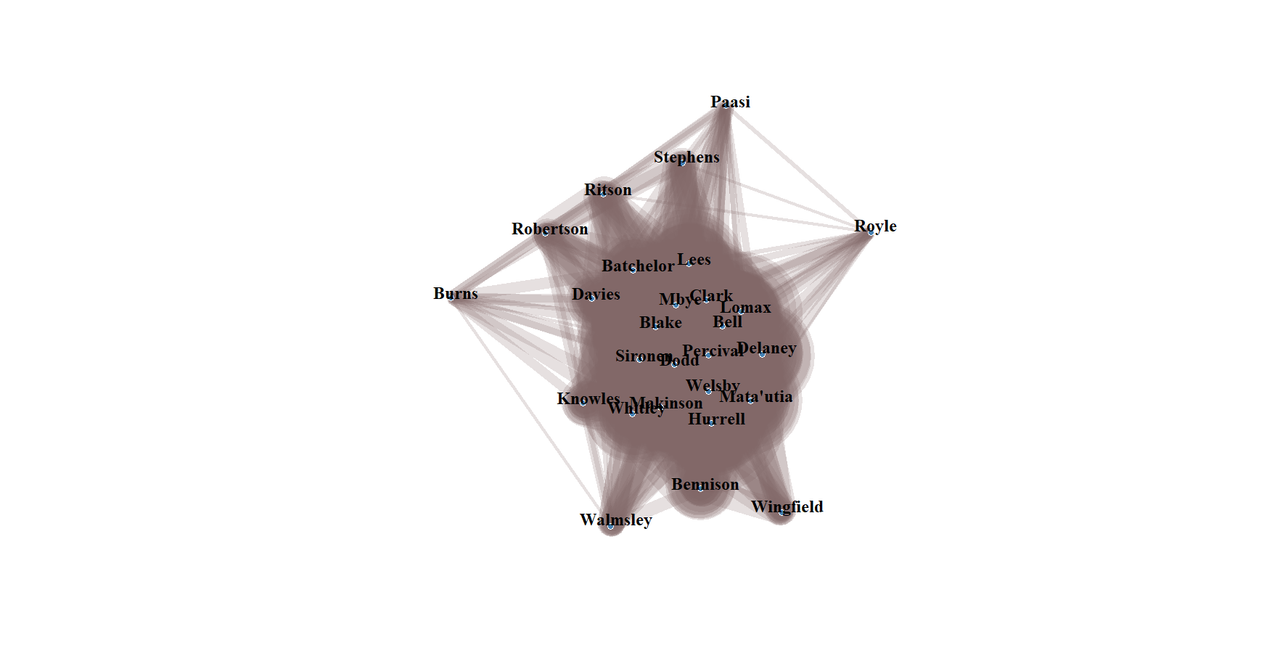

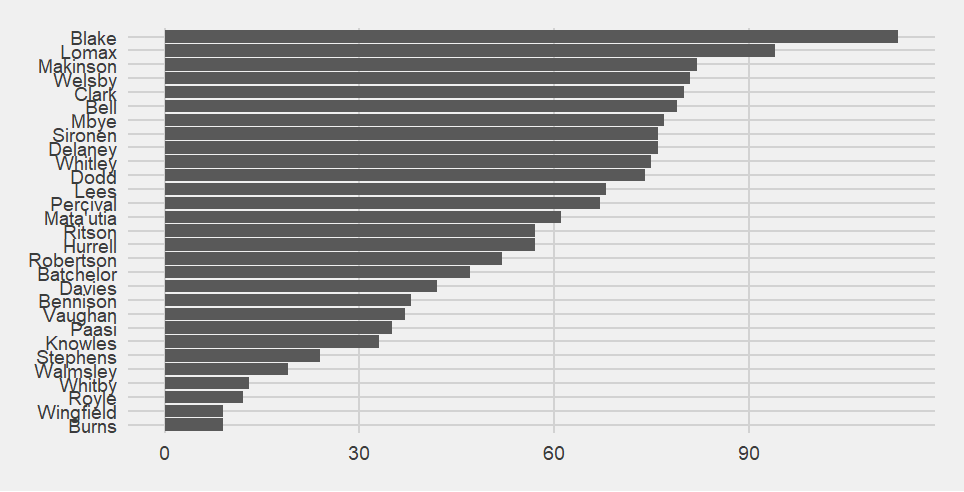
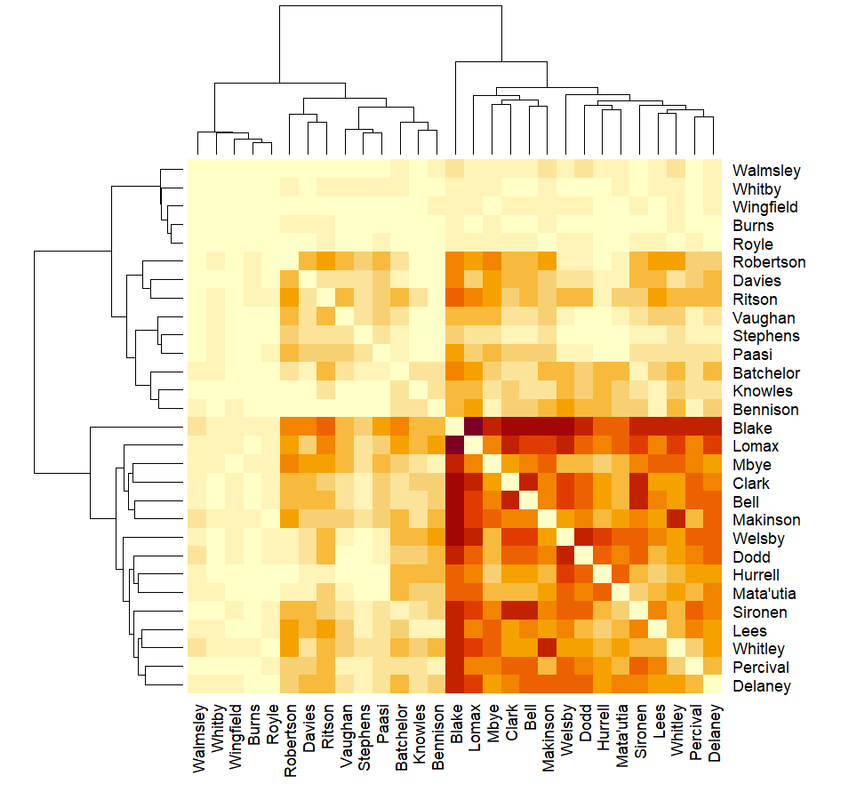

Saturday, 7 June 2025
Formula 1 2025 - Spanish Grand Prix
Saturday, 31 May 2025
Formula 1 2025 - Monaco Grand Prix - or "Williams did nothing wrong"
The race itself was pretty much dull as ditch water, even if part of me felt sympathy for Leclerc's "why always me" radio message about the timing of the virtual safety car. Why does it always happen at the worst possible time for him?
But it's Monaco, so nothing other than redesigning the cars so that they are smaller is ever going to make it an interesting race.And if they're going to add stupid rules, the teams, staffed as they are with over-grown hyper-intelligent schoolboys and girls, are going to bend and spindle those rules any way they can to get one over on the other teams and try to get points.
That's even more true of Williams who are one of the smaller teams (and why I have more sympathy for them than Mercedes or Racing Bulls).
Following an excellent performance in qualifying, they used a race strategy that guaranteed them points, in a sport where points = prize money.
Williams did nothing wrong!
Saturday, 24 May 2025
Saints Ahoy - Game 24 and the 2024 season to date
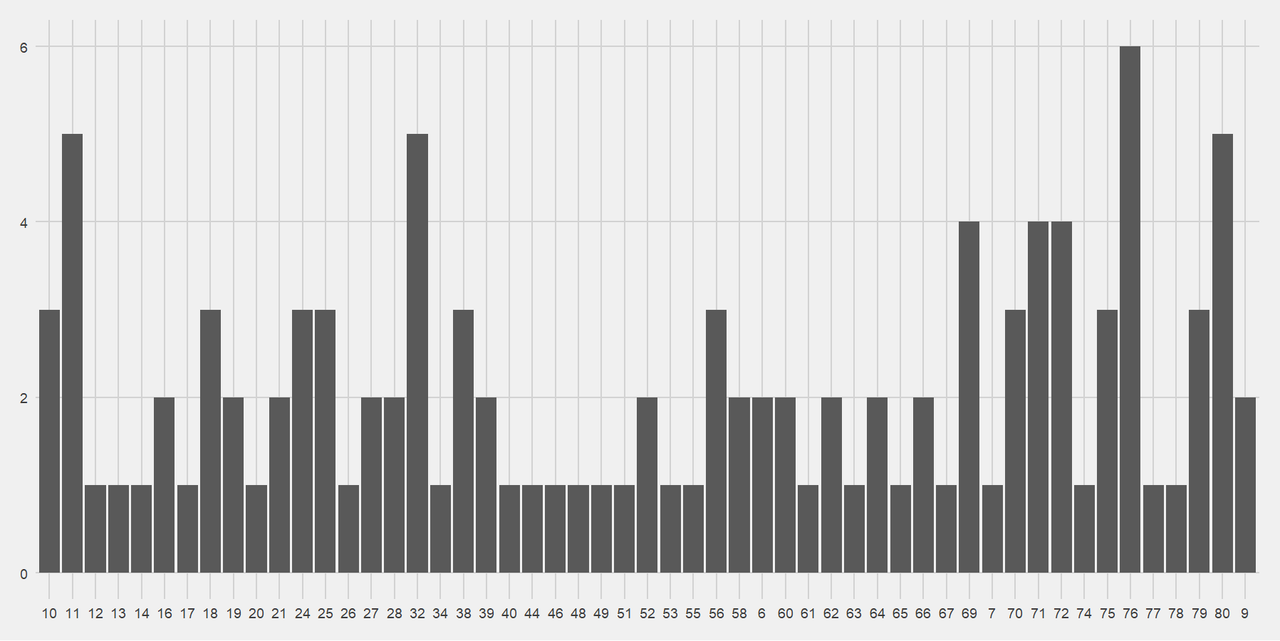

Saturday, 17 May 2025
Superman: the new one - some scattergun thoughts about comics, history and culture
Because L assures me that sometimes my post should be up to date and my film reviews are now running 5-6 years late.
I start with some caveats:
1 - in my comic book days, I was very much a Marvel girl. Make mine Marvel etc. The nearest I got to DC was Batman.
2 - James Gunn is one of those creative types who appears to have a direct line to my soul. He is responsible for an excessive amount of me crying in cinemas; somewhat famously, the time Guardians of the Galaxy made me cry so hard I gave L a migraine.
I have very little skin in this game (Superman) and I know that I will enjoy it anyway.
That being said, it's so nice to see a friendly Superman on screen.
I blame a mixture of Quentin Tarantino and the comics' Dark Age for the dour Supermen we have been having on the big screen recently (this applies to big screen only, the cartoons have been suitable).
Quentin Tarantino because of the whole which of Clark Kent's identities is the "real" one spiel, and everyone wanting to be an auteur like him and ape him in every possible way. (Said with affection for his films)
The Dark Age for that period of comics were everything had to be bleaker than bleak. And fellas, I understand the appeal, because those were the comics of my teenage years too. But they were a short blip in a long lifetime of the Superman character.
Superman is the best of us and happens to be an übermensch, not just an übermensch.
Wednesday, 14 May 2025
Formula 1 2025 - Miami Grand Prix
The title race is really hotting up (https://en.wikipedia.org/wiki/2025_Miami_Grand_Prix)
Shame Ferrari are nowhere near the pointy end for either championship. Instead, the drivers are busy taking potshots at each other and the team - https://www.bbc.co.uk/sport/formula1/articles/ce8g5xlmxjgoBoys, you get to do this when you're winning, not when you're languishing in 4th in the Constructors.
